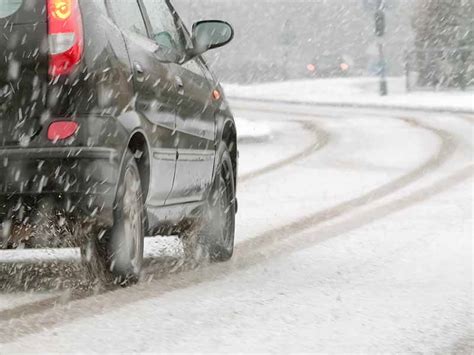How Fast Can You Drive With Snow Tires
Ronan Farrow
Apr 04, 2025 · 3 min read

Table of Contents
How Fast Can You Drive With Snow Tires?
Snow tires, also known as winter tires, are designed to provide superior traction and control in snowy, icy, and cold weather conditions. However, while they significantly improve safety, they don't magically make you immune to the laws of physics. The question of how fast you can drive with snow tires is nuanced and doesn't have a single, simple answer.
Understanding the Limits of Snow Tires
Snow tires aren't magic bullets. They dramatically enhance grip compared to all-season or summer tires in winter conditions, but they still have limitations. Driving too fast, regardless of tire type, can lead to loss of control and accidents. The speed limit, road conditions, and your driving skill all play crucial roles in determining a safe speed.
Factors Affecting Safe Speed with Snow Tires:
-
Road Conditions: This is the most crucial factor. Even with snow tires, icy patches, packed snow, or black ice can drastically reduce traction. Slow down significantly when encountering these conditions. The presence of slush doesn't necessarily mean you can drive faster; it often hides slick ice beneath.
-
Visibility: Reduced visibility due to snow, sleet, or fog requires even slower speeds to allow for increased reaction time and safer braking distances.
-
Vehicle Type: Different vehicles handle differently in winter conditions. Larger, heavier vehicles generally require more stopping distance even with snow tires.
-
Driving Experience: Experienced winter drivers will instinctively adjust their speed based on the conditions. If you're not comfortable with winter driving, err on the side of caution and drive significantly slower than the posted speed limit.
-
Tire Condition: Even snow tires wear down. Properly inflated, well-maintained tires perform better than worn-out ones. Inspect your tires regularly and replace them when necessary.
Speed Limits and Snow Tires: A Cautious Approach
While snow tires allow for slightly higher speeds in snowy conditions compared to all-season tires, never exceed the posted speed limit. Speed limits are set based on ideal conditions, and winter conditions are rarely ideal. Driving above the speed limit in winter conditions significantly increases the risk of accidents.
Safe Driving Practices with Snow Tires:
-
Smooth Acceleration and Braking: Avoid sudden acceleration or braking, which can lead to skidding.
-
Gentle Steering: Make gradual steering inputs to maintain control.
-
Increased Following Distance: Maintain a significantly greater following distance than usual to allow for increased braking distance.
-
Awareness of Surroundings: Pay close attention to road conditions and anticipate potential hazards.
-
Winter Driving Course: Consider taking a winter driving course to learn safe driving techniques in challenging conditions.
Conclusion: Prioritize Safety
The speed at which you can safely drive with snow tires is highly variable and depends on a multitude of factors. Prioritize safety above all else. Driving slower than the speed limit in adverse winter conditions is far safer than pushing the limits. Remember, snow tires enhance safety, but they aren't a guarantee against accidents. Safe driving practices and awareness are essential for navigating winter roads successfully.
Featured Posts
Also read the following articles
| Article Title | Date |
|---|---|
| How Do Dealerships Protect Cars From Hail | Apr 04, 2025 |
| How Do I Cancel My Tracker Subscription | Apr 04, 2025 |
| How Great Thou Art Trumpet Sheet Music | Apr 04, 2025 |
| How Great Our Joy Sheet Music | Apr 04, 2025 |
| How Fast Can You Drive In 4h Ford F150 | Apr 04, 2025 |
Latest Posts
Thank you for visiting our website which covers about How Fast Can You Drive With Snow Tires . We hope the information provided has been useful to you. Feel free to contact us if you have any questions or need further assistance. See you next time and don't miss to bookmark.
